 Official Government Website
Official Government WebsiteThree Island Crossing State Park
PARK UPDATE
Oregon Trail History Center is CLOSED Dec. 24th-26th AND NEW YEARS DAY
WAGON WHEEL CAMPGROUND OPEN 365 DAYS A YEAR
Winter 2025 Update
- All water has been shut off and campsites are ELECTRICITY ONLY
- Restrooms with showers are located in the day-use area and the east end of the Trail Break Cabin to the right of the park entrance
- Wagon Wheel Campground is reservable all year long.
- Campsite check-in time is 2 pm. And checkout time is 1 pm.
Cabins
- Cabins require reservations year-round, and they must be made at least 24 hours prior to the arrival date. The Cottonwood and Sage Cabins close November through mid-March.
- Cabin check-in time is 3 pm. And check-out time is 11 am.
- These times are being strictly enforced. If you arrive before 2 pm., you may park in the overflow parking area and visit the rest of the park
Motor Vehicle Entrance Fee $7 Dump Station Fee $10
Park Reservations
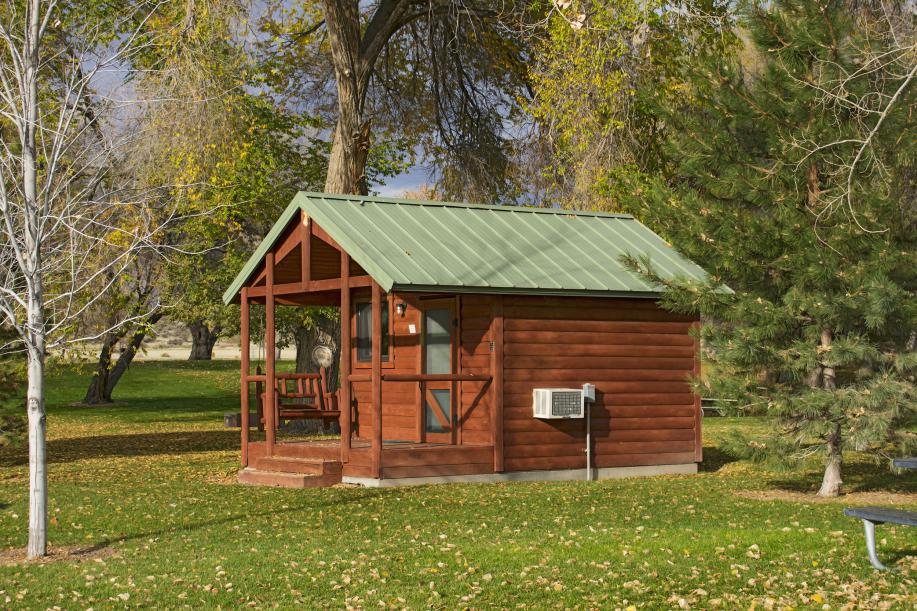

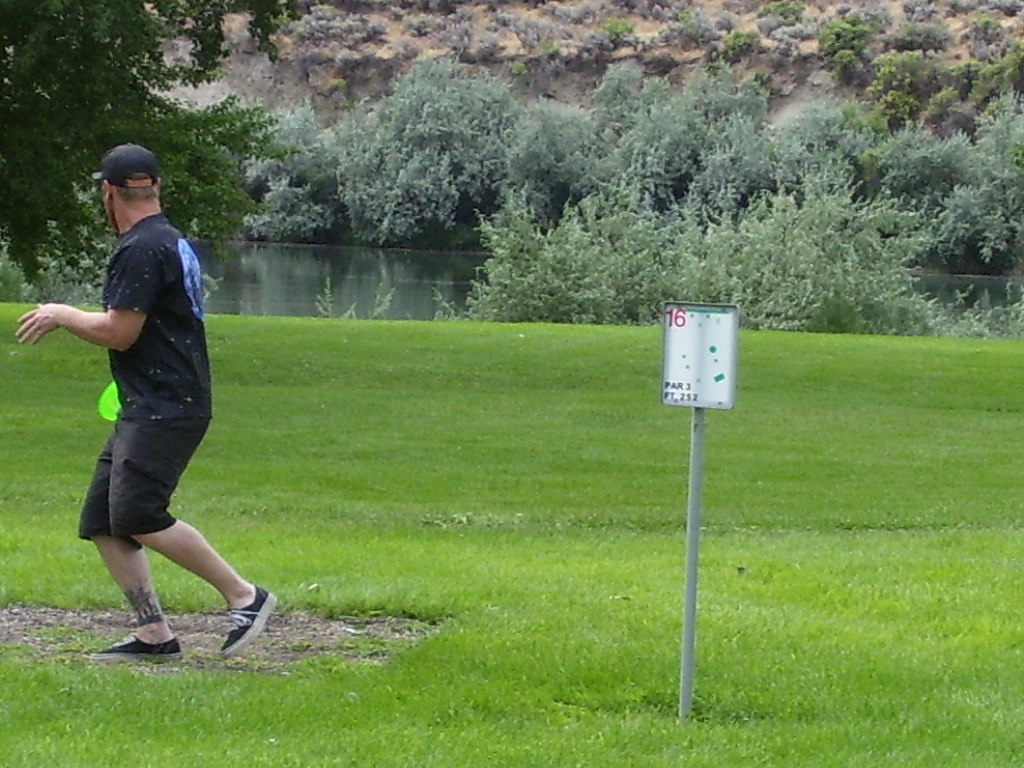
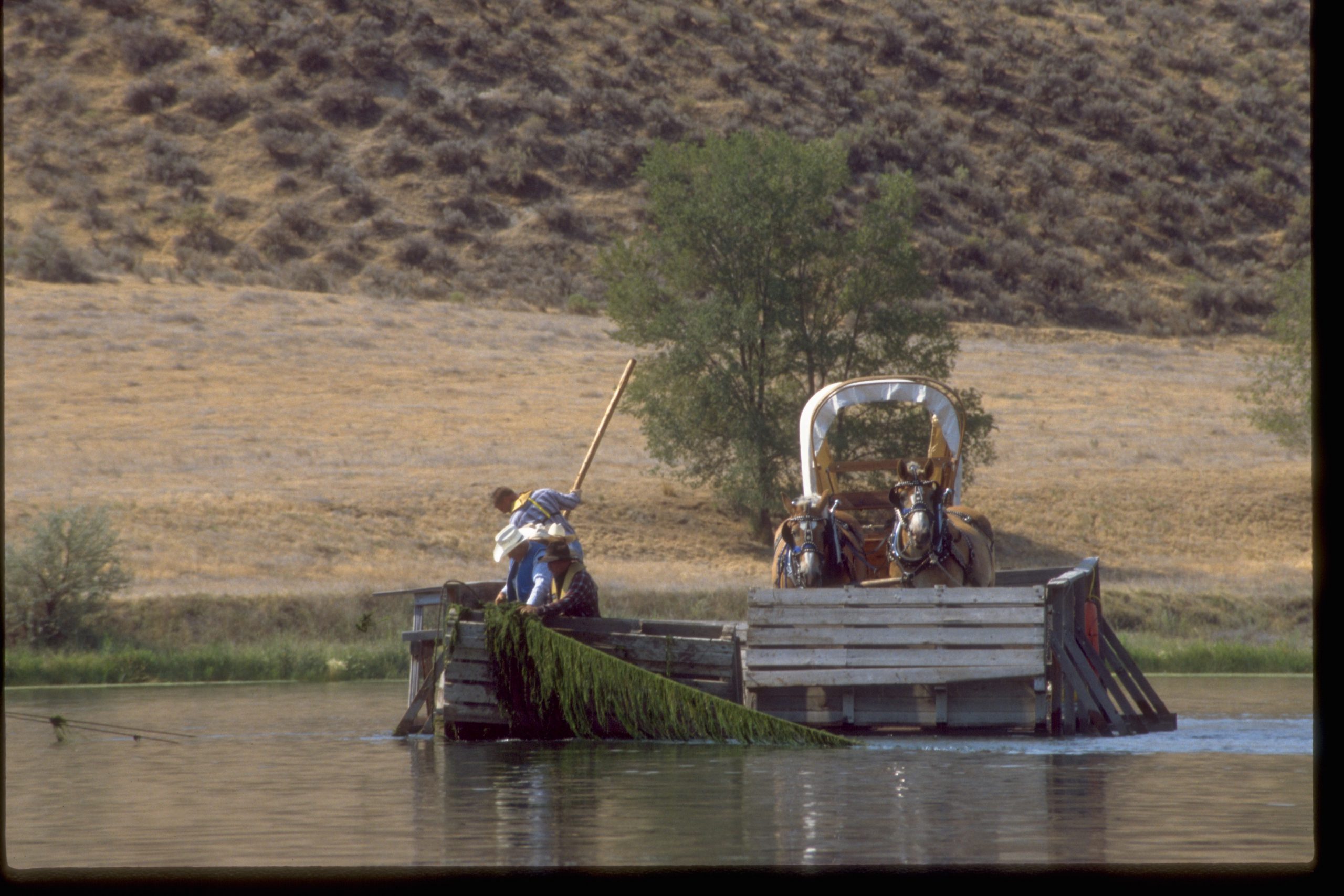
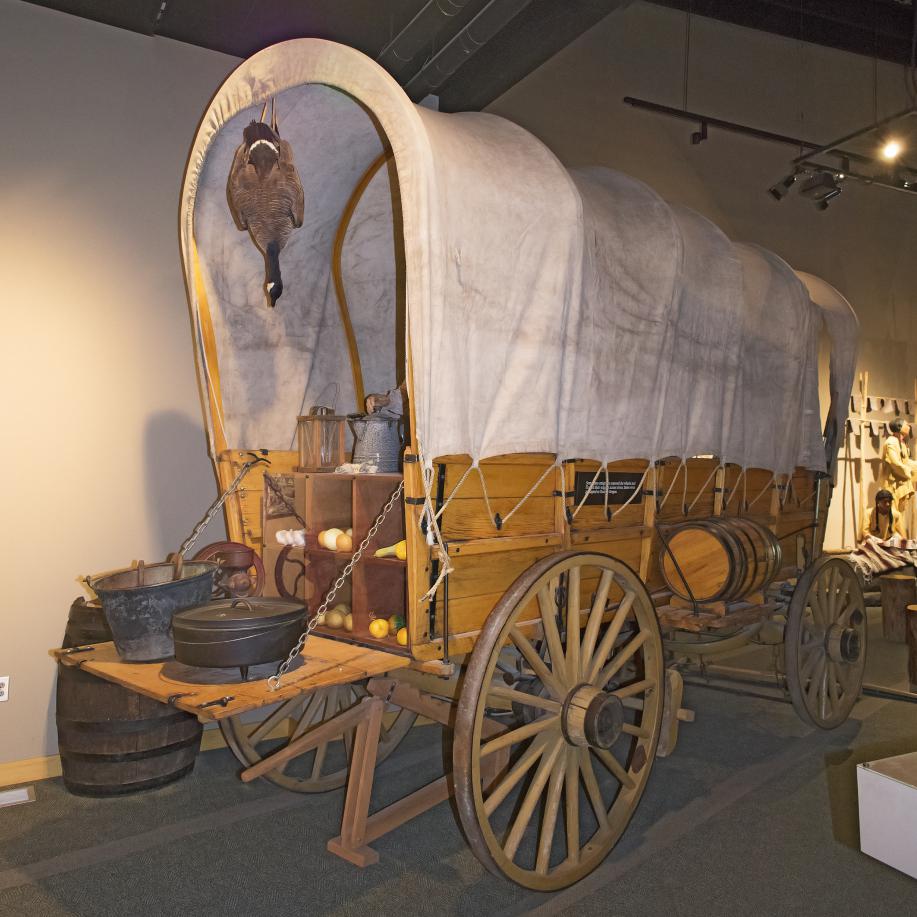
Additional Links
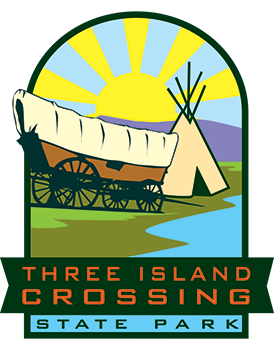

Contact the Park
Street Address:
Glenns Ferry, ID 83623
Mailing Address:
Phone:
Hours of Operation:
Upcoming Events
Modern travelers will find a stay at Three Island Crossing much more hospitable than did the 19th century Oregon Trail pioneers who crossed the mighty Snake River at this location. Located just two miles off Interstate 84 at the Glenn’s Ferry exit, the park offers campground with water and electrical service, eight cabins, picnic areas, historical interpretive programs and a fascinating admission-free interpretive center.
Take a self-guided tour of the park and see the original wagon ruts and Conestoga replicas. Visit the Oregon Trail History and Education Center to learn more about pioneers, early settlers and Native American history. Dangle your feet or a line in the Snake River where emigrants made their historic crossings. Or sit under a tree and enjoy a picnic lunch.
Park History

Oregon Trail pioneers knew Three Island Crossing well. It was one of the most famous river crossings on the historic trail and the most difficult crossing in Idaho. Crossing the Snake River was always dangerous, but when the water was low enough to negotiate, everyone crossed who could, to take advantage of the more favorable northern route to Fort Boise. During high water, most emigrants were forced to travel along the South Alternate route into Oregon — a dry, sandy, dusty, and hot trail that wore out man and beast.
The original course of the Oregon Trail was from Independence, Missouri to Oregon City in Oregon’s Willamette Valley. Most pioneers traveled the trail from 1841 through 1848. However, fur trappers and explorers used the travel corridor as early as 1811. By the mid-1860s, the trail was used little as an emigration route.
The Oregon Trail entered Idaho in the southeast corner of the state. At Fort Hall, it joined the Snake River, following the south bank until Three Island Crossing was reached near Glenns Ferry. The route left Idaho near the site of old Fort Boise, near Parma, after winding through 500 miles of the state.
Upon reaching the Three Island Ford, the emigrants had a difficult decision to make. Should they risk the dangerous crossing of the Snake, or endure the dry, rocky route along the south bank of the river? About half of the emigrants chose to attempt the crossing by using the gravel bars that extended across the river. Not all were successful; many casualties are recounted in pioneer diaries. The rewards of a successful crossing were a shorter route, more potable water and better feed for the stock.
The Three Island Ford was used by pioneer travelers until 1869, when Gus Glenn constructed a ferry about two miles upstream. Some travelers continued to cross at Three Island to avoid paying for the ferry.
- Hike
- Bike
- ADA Cabin
- ADA Campsite
- ADA Restroom
- Amphitheater
- Auto Touring/Scenic Routes
- Charcoal Grills
- Dump Station
- Electricity
- Fire Rings
- Firewood Sales
- Flush Toilets
- Group Picnic Shelter
- Indoor Restrooms
- Indoor Showers
- Picnic Areas
- Water – Drinking
- Water Fountains
Disc Golf
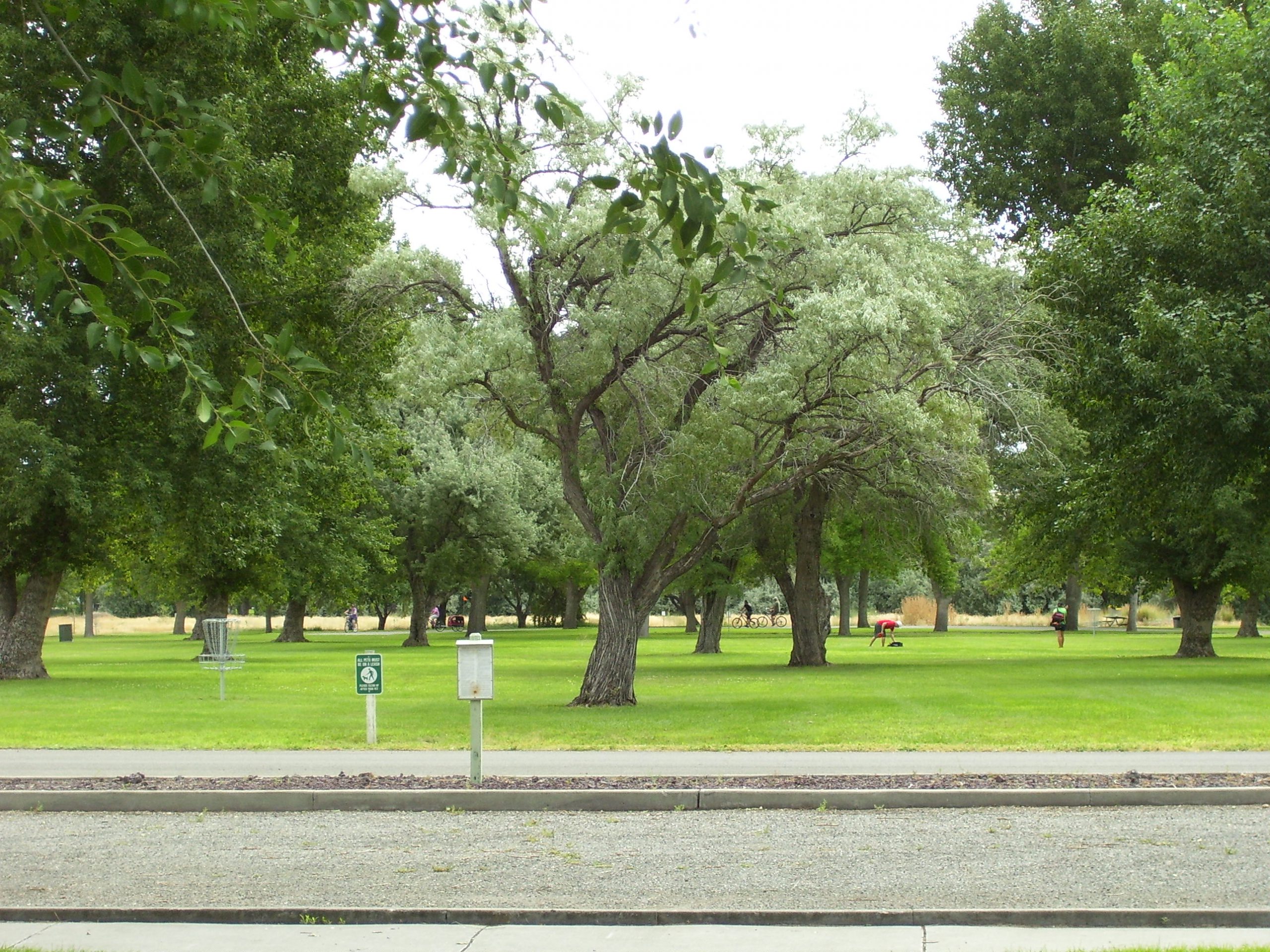
Discs are available for purchase at the Oregon Trail History and Education Center.
Regarding tournaments: Tournament organizers need to coordinate with park staff on a group use permit. Please call 208-366-2394 or email park staff.
Downloads
General Accommodations
- Cabins
- RV Campsites
- Tent Campsites
General Information
There are NO DOGS allowed in any of the cabins.
- A Group Use Permit is necessary for gatherings of 25 persons or more, including reservations of shelters and conference rooms, disc golf tournaments, school tours and any other group activity requiring special considerations or deviations from park rules or policies.
- Please include as much detail as possible on the Group Use Permit application and email the filled out form to THR@idpr.idaho.gov
- The shelter reservation fee is non-refundable.
- All motor vehicles entering the park must pay the $7 entrance fee or display a valid Idaho State Parks Passport and or annual Motor Vehicle Entry Fee pass.
- The park closes at sunset.
- Pack-It-In, Pack-It-Out Policy: Many trash cans and several dumpsters have been placed throughout the park for your use.
- Cleanup of tables and shelter area is the responsibility of the reserving party.
- Amplified music shall not exceed a maximum of 65 decibels at 100 feet distance.
- Pets must always be on a leash and owners are responsible for clean up.
- The person making this reservation is responsible for informing all group members, caterers, and rental companies of the above information.
River View Shelter
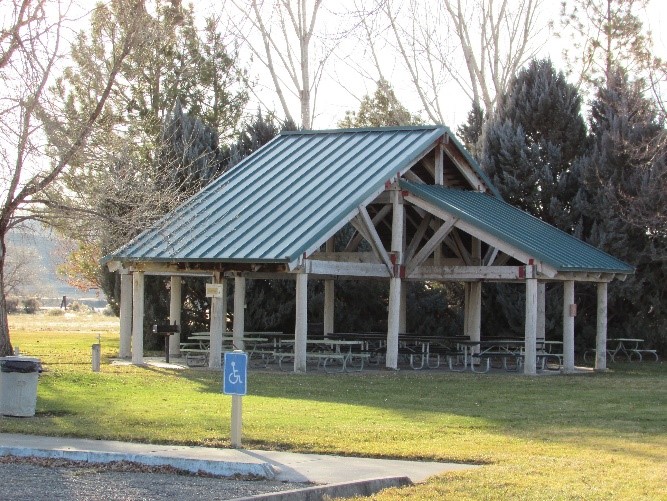
- $25 per day use fee
- $25 reservation fee
- 200 people max
- Two 20-amp outlets
- Two standing charcoal grills
- 12 picnic tables
- Restrooms nearby
- Water nearby
- Parking at location
Western Pine Shelter
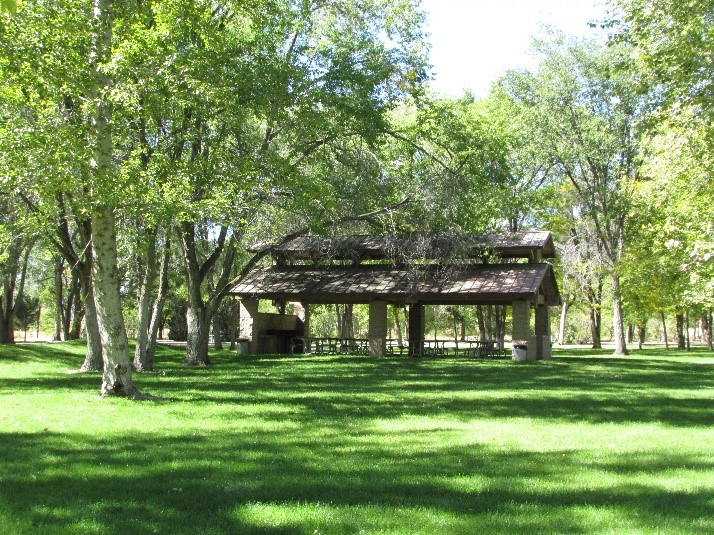
- $25 per day use fee
- $25 reservation fee
- 100 people max
- One 20-amp outlet
- Large built in charcoal grill
- 8 picnic tables
- Restrooms nearby
- Water nearby
Sunrise View Shelter
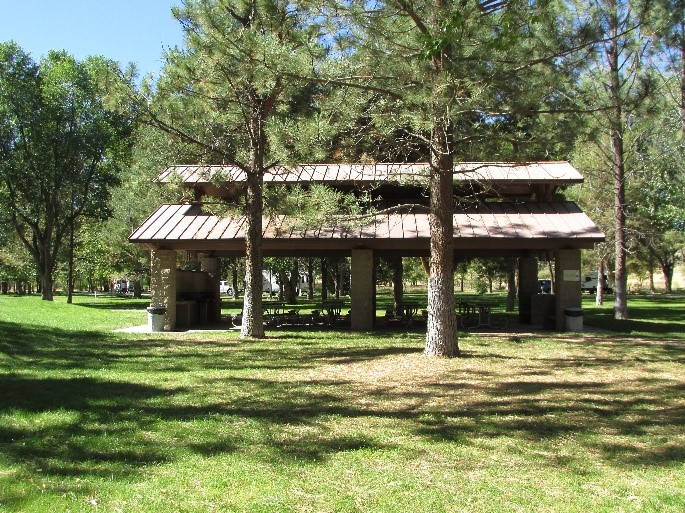
- $25 per day use fee
- $25 reservation fee
- 100 people max
- Located in Trailside Campground
- One 20-amp outlet
- Large built in charcoal grill
- 8 picnic tables
- Restrooms nearby
Parking in overflow parking area at campground entrance: 16 parking spaces and one Americans with Disabilities Act-accessible space
Conference Room

- Located in the Oregon Trail History and Education Center
- $25 per day use fee
- $25 reservation fee
- 60-person occupancy
- 60 chairs
- 11, 5-foot tables
- 2, 6-foot tables
- 2, 8-foot tables
- Kitchenette
- Restrooms nearby
No additional seasonal information provided.





